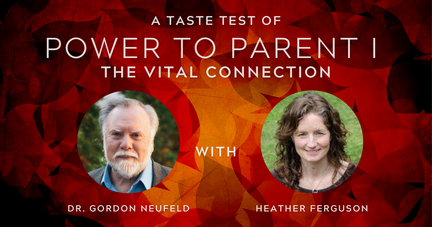
Our Heart Rope is Strong
Recently I was saying goodbye to my 24-year-old daughter who was going off on a long overseas journey: a trip she was both excited about and ready for. The intention for the trip is that it will be not only an exploration of new lands, but also an exploration of her inner landscape. After all the preparation, anticipation, and joyful excitement, when we embraced one last time, the tears came for both of us.
“I’m feeling ...” she said, referring to her sadness. “That’s okay,” she reassured herself, having come to understand that feelings, even the difficult ones, are important.
Ah, yes. We were both feeling the pain of separation.
Then she said the magical words that I said to her countless times over the years, and that have kept us feeling close during other times of separation since she was a little girl: “Our heart rope is strong.” She spoke to herself, as well as to me, reminding us both that this invisible bond between us is always there, always connecting us. Then she said, “I better keep going around the world, so it doesn’t get tangled up from going back and forth.”
“Our heart rope is strong,” I replied, “And it knows how to untangle itself. You can go wherever your spirit leads you and still, the heart rope will connect us.” Remembering that, we both were comforted.
This is the beauty of bridging — the attachment practice that focuses on what connects us rather than what divides us.
When my daughter was little and I was away overnight on work trips, I would often draw cards for her to open in the mornings. My artwork was stick-figurish, but she delighted in the pictures and the little messages I wrote on the inside. It was a way of letting her know I was thinking about her, even though we were physically apart.
When my son was young, I found a candelabra with one candle for each night of the week. When my husband went away, we lit a candle for that day and added one more lit candle every day. My son was too young to understand time, but we put a ring around the candle that would be lit the day his dad would return. This helped him to focus on when his dad would be back rather than the fact that he wasn’t there.
Separations were not easy for our son, even as he got older, so my husband and I continued to find ways to help him hold on to us when we were away. I would always give him a piece of my jewelry to hold on to — not some discarded item from the back of my drawer, but a piece that I cherished and wore frequently. Sometimes he wore it, sometimes it sat on his dresser; either way, it was important. When he was a teenager and he was the one going away for the night, I would still tuck a piece of jewelry in his overnight bag and let him know it was there, asking him to look after it for me. Much to my surprise, he never once protested.
When my husband would go away on work trips, he would give our son a treasured eagle claw in a colorful, embroidered bag. We did these things because we knew it was important to help him hold on ... but we did not always know if it made a difference. One day, when my son was old enough that we did not think it would affect him that his dad was going away for a night, he and I were playing basketball on the driveway as his dad drove out and on his way. My son looked at me, alarmed, and faced the road with hand outstretched, saying, “He forgot to leave me his eagle claw!”
If we get creative, there are so many ways to bridge separation; even the ultimate separation of death. When my father died, my brother, a boat builder, made his casket. As we lowered our father into the grave, my brother quickly unscrewed the handles — sturdy stainless dock cleats — and gave one to each of us four siblings to keep. In the end, of course it is not the "things" that are important, but, rather, what they symbolize: a caring relationship where one feels cherished and loved. For this same reason, I still find myself wearing my dad’s oversized leather shirt when I need to feel him close by.
Now my son is at university and my daughter is halfway across the world. My husband and I are "spacious nesters," grateful that our children are flourishing. We look forward to welcoming them home when they circle back to us through their young adulthood.
A relationship is forever, as long as we know how to hold on when apart. I am realizing now that I need the bridging as much as my children do.


